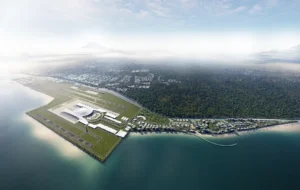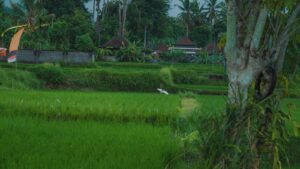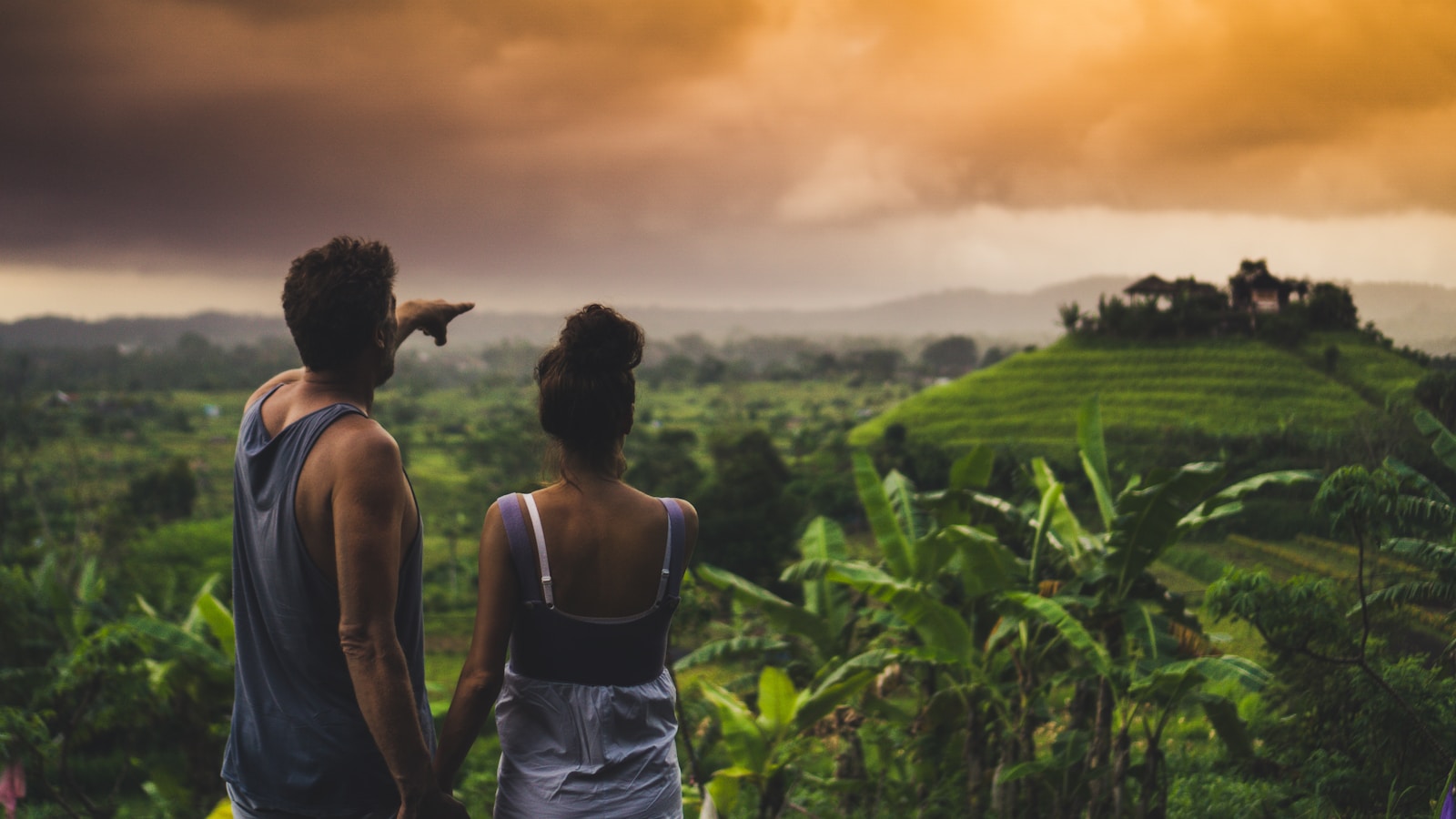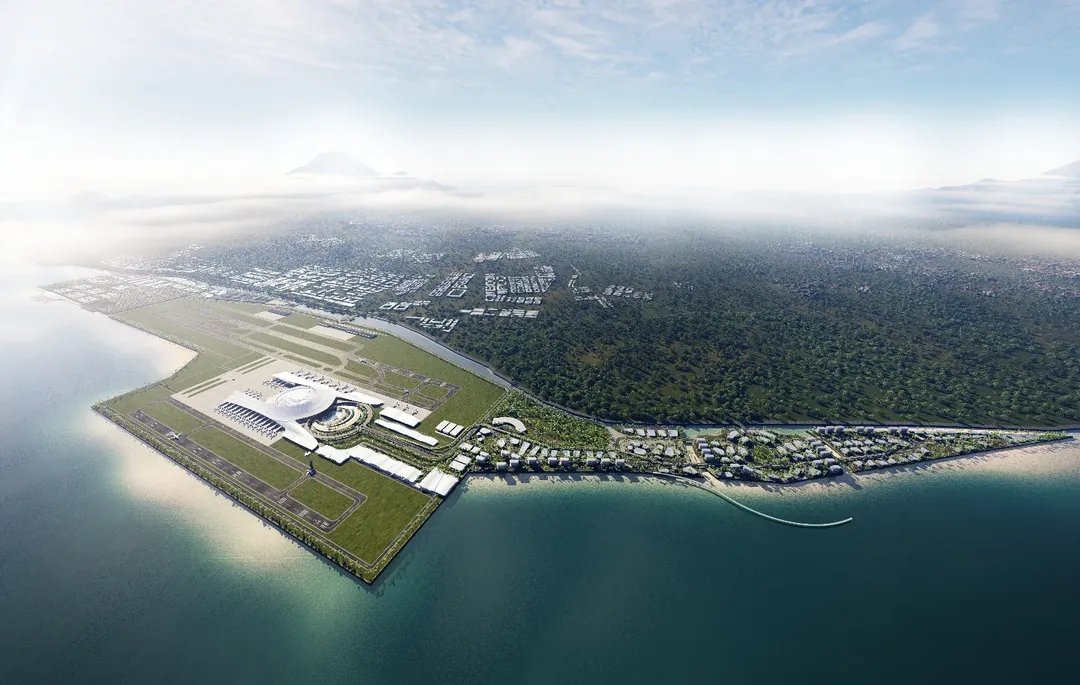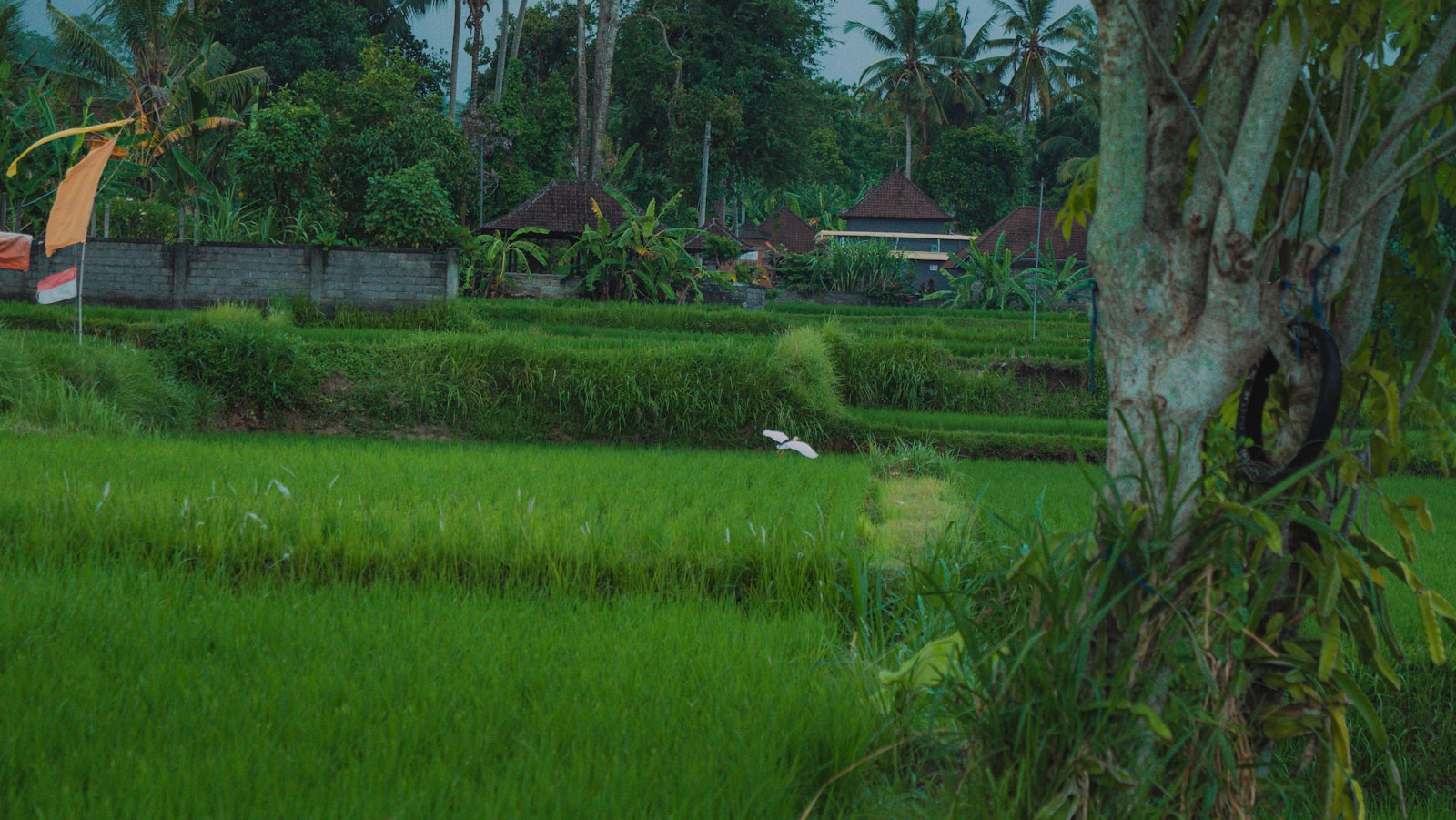How Bali Tourism Is Evolving: From “Sun, Sand, Sea” to Stories, Culture & Connection
These days, planning a Bali trip often begins with a deeper question: “How can I truly experience Bali, not just visit it?” Data shows that travellers to Asia-Pacific—and Bali in particular—are now seeking vacations that go beyond mere relaxation. Rather than ticking off beach days, many are drawn to stays and experiences that reflect local culture, personal meaning, and authentic connection.
Analyses of Booking.com search data reveal that holiday-home options and nontraditional lodging are rising sharply in popularity across the region, including Bali. At the same time, new initiatives—like Airbnb’s collaboration with UNESCO to publish a Bali Cultural Guidebook and support a Cultural Ambassador Program—signal that local tourism actors are responding in kind.
This trend matters for travellers, hosts, the environment—and Bali’s cultural identity. In this article, I flesh out what the data is telling us, how Bali is adapting, the challenges ahead, and what it means if you’re planning a trip (or designing a tourism business) with authenticity in mind.
What the Data Says: Trends, Preferences, and Shifts
Rise of non-hotel stays & “living like a local”
One of the clearest signals is the growing preference for vacation homes, villas, homestays, and unique accommodation types over traditional hotels. In Bali and across Asia-Pacific, travellers are making more searches for holiday homes, private villas, wooden cottages, lakeside cabins and boutique stays places where they can cook, host, stay longer, and live more freely.
Booking.com’s “Gen.Voyage!” research also notes that about 25% of families in APAC say they are drawn to culturally immersive or unique accommodation types, suggesting that this is not a niche but a growing mainstream interest.
Hyper-personalisation as the new “luxury”
Luxury travel in 2025 is less about extravagance and more about personal resonance. In the Asia-Pacific, trends show that travellers want curated journeys—stays and activities tailored to their desires. Villa Finder’s insights highlight how many of their guests request bespoke touches, local guides, or special arrangements. (villa-finder.com)
In effect, the “wow factor” is shifting: it’s now about depth, not surface glamour.
Cultural immersion & purposeful travel
Beyond the place where you stay, travellers are increasingly valuing the stories, traditions, and community behind a destination. Data and announcements from Airbnb indicate that:
- 90% of travellers in Asia-Pacific are seeking authentic cultural experiences. (ETTravelWorld.com)
- 73% of travellers (per Airbnb surveys) value local host recommendations to uncover culture.
- 86% say they are likely to support preserving local cultural and historic assets. (Airbnb Newsroom)
So it’s not just about a comfortable bed or aesthetic design—it’s about being guided by someone who knows the place, sharing rituals, witnessing daily life, discovering hidden corners.
Regional & macro trends reinforcing this shift
A few broader trends pushing this move:
- Asia-Pacific destinations are dominating trend lists in 2025 (eight out of 15 top trending summer spots). (Mastercard)
- Bali remains a key draw in regional travel searches (alongside Tokyo, Phuket, etc.). (traveltrendstoday.in)
- Luxury travel market growth in APAC is partly fed by rising incomes, but also by growing demand for meaningful and bespoke offerings. (kenresearch.com)
- The booking window for villas in Bali has remained stable—even extended in some cases—indicating more planning and intention behind trips.
So the conventional mass-tourism model is under pressure. Instead, destinations that can package authenticity, local narratives, environmental care and personalisation are best placed for growth.
Bali’s Strategic Response: Cultural Guidebooks, Ambassador Programmes & Local Empowerment
Recognising that demand is changing, Bali’s tourism sector is adapting. Two linked initiatives stand out: Airbnb + UNESCO’s Bali Cultural Guidebook and the Cultural Ambassador Program incentivising local hosts to embody and share Bali’s heritage.
The Bali Cultural Guidebook: Beyond tourist checklists
In September 2025, Airbnb and UNESCO launched a guidebook for Bali that goes beyond beaches. It maps out over 150 cultural elements—from festivals, crafts, foodways, rituals, landscapes, temples and living traditions. (Airbnb Newsroom)
This guide isn’t just a catalog. It’s a tool to:
- Help travellers discover lesser-visited regions and cultural circuits beyond Ubud and Seminyak. (travelandtourworld.com)
- Anchor visitor behaviour in Bali’s Tri Hita Karana philosophy, which emphasises harmony between human, natural, and spiritual realms. (ETTravelWorld.com)
- Encourage support for traditional homestays and grounded local enterprises.
By doing this, Bali positions itself not just as a tropical escape, but as a place to immerse, reflect, and connect.
Cultural Ambassador Program: Hosts as storytellers and guides
To bring the guidebook to life, Airbnb and UNESCO rolled out a Cultural Ambassador Program. Its goals:
- Train local homestay hosts and small business owners in cultural storytelling, heritage, visitor engagement, and sustainable tourism practices. (Airbnb Newsroom)
- Equip roughly 75 hosts and 50 local creatives/SMEs across Bali’s five regencies (Badung, Tabanan, Gianyar, Bangli, Buleleng) as ambassadors. (unesco.org)
- Share the cultural mapping outcomes with hosts and enable a networked approach to visitor immersion. (unesco.org)
The logic is simple: when local hosts are themselves culturally literate ambassadors, it becomes more natural for guests to engage respectfully and meaningfully.
Mapping & regional focus
Between August and December 2024, UNESCO undertook cultural mapping across the five regencies, documenting tangible and intangible heritage—from culinary practices to rituals, arts, temple networks and landscapes. (unesco.org)
This mapping ensures that the guidebook is grounded in local context, not external packaging. It also helps spotlight underexplored regions so that visitor flows can be more balanced across the island. (travelandtourworld.com)
One visible example: the Subak water systems (a UNESCO World Heritage recognised feature) are given attention. (en.tempo.co)
Risks, tensions & the need for balance
While these steps are promising, they must contend with difficult realities:
- Overdevelopment and land conversion: Rapid villa growth has sometimes replaced agricultural land and stressed infrastructure.
- Cultural dilution or commodification: Turning tradition into tourism product risks oversimplifying or staging culture.
- Uneven benefit distribution: Ensuring profits and cultural agency reach local communities, not just big players, is tricky.
- Visitor behaviour & overload: Even cultural circuits can become pressured if visitor numbers surge without constraints.
Managing these tensions will be crucial if Bali is to evolve without losing what makes it unique.
What This Means (For You, For Bali, For Tourism Designers)
For travellers planning Bali visits
If you’re dreaming of Bali, here’s how to lean into this wave:
- Stay in local homestays, guesthouses, or boutique villas in smaller villages.
- Use the Bali Cultural Guidebook to plan your route. Try going off-grid rather than repeating the standard itinerary.
- Engage local hosts or certified cultural ambassadors; ask for stories, arrange village walks, or join ritual events.
- Support micro and small local enterprises—crafts, makers, farming houses, cooking classes.
- Be thoughtful: respect pacing, don’t crowd sacred spaces, learn a few words of Bahasa, and leave with more understanding than footprints.
These choices help you experience Bali as more than a destination—you become part of its unfolding story.
For local hosts, businesses, and tourism professionals
- Equip hosts with cultural knowledge, interpretive capacity, and visitor engagement skills. The Ambassador Program is a model, but on-the-ground training and mentorship will matter.
- Package experiences around local narratives, seasonal flows, community rhythms rather than homogenised “packages.”
- Run sustainability and impact assessments—cultural, environmental and social—when scaling.
- Use data smartly: track guest preferences, feedback, and behaviour to adapt offerings dynamically.
- Collaborate across villages to route visitors in meaningful loops rather than backtracking to hotspots.
- Incentivise community-led management of cultural sites rather than external operators.
For destination managers, planners & policy makers
- Use the cultural mapping work as baseline heritage data—monitor sites, intangible practices, visitor pressure zones.
- Develop zoning or visitor caps around sensitive areas, sacred sites, or fragile landscapes.
- Bridge public and private actors: promote investment but boundary-set to avoid overdevelopment.
- Invest in infrastructure, access roads, signage, waste systems to support distributed tourism.
- Support marketing models that highlight depth & distinctiveness rather than “beaches + nightlife” alone.
- Measure and share data transparently with all stakeholders—villages, hosts, collectives—to maintain trust.
The Digital Bridge to Meaningful Travel
Here’s an added perspective often underexplored: digital tools as enablers of deeper connection, not distractions.
Virtual & augmented tools for pre-trip immersion
Many travellers arrive with little sense of context. Pre-departure apps or AR experiences can preview a village, teach you about local lore, or simulate temple rituals. For example, there is research into VR renditions of Balinese temples—projects that document and recreate sacred spaces in virtual form—to help visitors appreciate history and significance. (arXiv)
Used judiciously, such tools can prime empathy and curiosity before you set foot on the island.
Digital guides & story maps
Rather than printed pamphlets, interactive maps on your device can guide you along local cultural circuits, delivering stories, audio, visuals, and alerts about respectful behaviour. Hosts and guides could embed personal narratives, QR codes, or short media pieces as you walk through a village or temple.
Feedback & community loops
Digital reviews or guest narratives can feed back into hosts and local collectives. Over time, this tight feedback loop helps evolve experiences toward what actually resonates, and it surfaces issues (crowding, facility strain, cultural friction) earlier.
Ethical use of tech
But here’s the caveat: technology must augment, not replace, real human exchange. It must be designed to center community perspectives—not corporate branding—and ideally, be open or co-owned by local stakeholders.
In short: The future of meaningful travel blends analogue and digital, but the soul must always remain human, rooted in story and place.
Bringing It All Together
As Bali’s tourism era matures, the shift is unmistakable: travellers are waking up to the value of meaning over mere “sun and surf.” The data backs it. Booking searches, luxury travel patterns, and Airbnb insights all point to a deeper mindset. Bali is responding too—with cultural guidebooks, ambassador programmes, and mapped heritage networks.
If done well, this pivot can reshape how we travel—not as passive spectators but engaged participants in the unfolding stories of a place. For Bali, that means protecting its landscapes, uplifting its communities, preserving its rituals. For travellers, it means leaving with memories, not just photos.
Take your trip thoughtfully. Stay off the beaten track. Let local hosts tell their stories. And when the time comes, may Bali’s magic be more than skin-deep.



